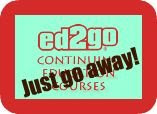Moodle Moot PM - Part 1
Jason Cole – Director, Cognition and Instruction Associates, session titled “Open Source + Open Content = Open Education”
Abstract: “As the world of open content and open source software expand, the natural next step is the combination of the two. Truly open education will require a combination of open content and software available to a global audience. Currently, open content and open software are developed completely separately, and there is no easy way to join the two. These silos are slowing the adoption of open content and increasing the cost of education.”
“This talk will discuss some future possibilities for integrating these two worlds. The next generation of content repositories and Moodle tools will provide the opportunity to begin to truly integrate open content and open source. What might this integration look like and what are the barriers still in our way?”
Author of Using Moodle available under Creative Commons
Why are textbooks so expensive?
Textbook Costs: $900 per year, which is 17.5% of the tuition at 4/yr school, 43% of tuition at 2/yr school, and therefore, 43% of students didn’t purchase a required textbook.
Source: Ripoff 101
General inflation rate = 14% since 1994
General Publisher’s increase = 19% since 1994
Academic textbooks wholesale increase = 62% since 1994
Supplements can add 15-45% additional cost to the textbook
30% of faculty use publisher’s online homework
19% use online quizzes from publishers (reduces workload for instructor)
74% of faculty required or recommended supplementary materials
79% believe under-prepared students would do better if they use supplementary materials
90% believe under-prepared students would do better pending more time with textbook
Source: Jim Farmer - Faculty Selection and Use of Publisher-Provided Textbooks and Supplementary Materials in the United States
Only 2% of faculty use BlackBoard cartridges
Pass rates increased dramatically when students used supplementary materials.
By having students pay this cost to the publishers, colleges are shifting the costs of content development on to the student. Students are paying for the materials and service rather than the college as part of instructional technology.
What will it take to write an open content textbook?
Two areas for investigation
They are not similar to an open source software model.
Open CourseWare Advantages:
Abstract: “As the world of open content and open source software expand, the natural next step is the combination of the two. Truly open education will require a combination of open content and software available to a global audience. Currently, open content and open software are developed completely separately, and there is no easy way to join the two. These silos are slowing the adoption of open content and increasing the cost of education.”
“This talk will discuss some future possibilities for integrating these two worlds. The next generation of content repositories and Moodle tools will provide the opportunity to begin to truly integrate open content and open source. What might this integration look like and what are the barriers still in our way?”
Author of Using Moodle available under Creative Commons
Why are textbooks so expensive?
Textbook Costs: $900 per year, which is 17.5% of the tuition at 4/yr school, 43% of tuition at 2/yr school, and therefore, 43% of students didn’t purchase a required textbook.
Source: Ripoff 101
General inflation rate = 14% since 1994
General Publisher’s increase = 19% since 1994
Academic textbooks wholesale increase = 62% since 1994
Supplements can add 15-45% additional cost to the textbook
30% of faculty use publisher’s online homework
19% use online quizzes from publishers (reduces workload for instructor)
74% of faculty required or recommended supplementary materials
79% believe under-prepared students would do better if they use supplementary materials
90% believe under-prepared students would do better pending more time with textbook
Source: Jim Farmer - Faculty Selection and Use of Publisher-Provided Textbooks and Supplementary Materials in the United States
Only 2% of faculty use BlackBoard cartridges
Pass rates increased dramatically when students used supplementary materials.
By having students pay this cost to the publishers, colleges are shifting the costs of content development on to the student. Students are paying for the materials and service rather than the college as part of instructional technology.
What will it take to write an open content textbook?
Two areas for investigation
- Production of materials
- Use and integration
They are not similar to an open source software model.
Open CourseWare Advantages:
- Most comprehensive
- Structure collections
- High reputation
- Common licensing
- Incomplete (textbook but reading lists, but no exercise or learning challenges)
- Static
- No feedback
- No atomic improvement (can’t improve just one piece, like bug fixes in FOSS)
- Small pieces
- Tend to be more interactive material
- Tend to have good searchability/findability
- Small pieces not joined
- Variable quality
- No integration
- Not comprehensive
- No common licensing
- Many hands
- Comprehensive scope
- Task decomposition
- Common licensing
- Regression to the mean(est)
- Not stable / vetted
- Variable quality
- No integration
- Not comprehensive
- Open Content Searchability
- Open Content Findability
- Open Content Obtainability



Comments